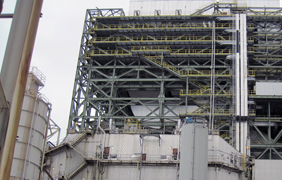Troubleshooting ESP Secondary Voltage Dividers
Ensuring accurate operating signals to voltage controls is the key to optimizing precipitator performance and protecting your equipment. Proper maintenance yields significant long-term benefits.
Maintaining peak performance for precipitator voltage controls requires accurate transformer/rectifier (T/R) feedback signals. These signals are also important tools for troubleshooting sections with poor performance. One of the most important feedback signals is secondary voltage or kV. Although this is one of the most commonly inaccurate signals found in many installations, correcting these errors is relatively simple.
One clue that kV feedback is inaccurate: secondary voltage is operating at unusually low levels, yet the primary voltage indication is normal for the amount of current displayed. If this happens, you can check for inaccuracies by estimating the secondary voltage and comparing the estimate to the actual reading.
Use the following formula to estimate secondary voltage.
Primary Current x Primary Voltage x .7
Secondary Current
Here’s an example: a T/R set is running 73 Amps, 440 Volts and 500 Ma (.5A). In this case, you’d fill in the formula as shown below.
73A x 440V x .7 = 44,968 Volts or 45 kV
.5A
This method of calculating secondary voltage is a useful troubleshooting tool when you experience a missing or suspicious signal. The formula only works, though, if the conduction angle is above 100 and the other three signals are calibrated.
If you discover that the signal is not, in fact, reading correctly, the next step is to recalibrate and verify the signal using the control manufacturer’s guidelines. Be very cautious when calibrating feedback signals: you’re working on a live control with high voltage!
Signals from voltage dividers allow the voltage control to read and monitor secondary voltage. This protects the T/R set from over-voltage, which can damage diode bridges and the secondary transformer. How can you tell if a voltage divider has failed or is failing? You can reasonably suspect this in the following scenario: a voltage control shows no reading in the secondary voltage readout display, but it is still operating and the other readout values are normal.
When a voltage divider fails, replace it. Many voltage dividers are located in the T/R set tank, which makes them difficult to access. Retrofit dividers are available that can be installed in the high voltage switch enclosure or bus duct”a much more accessible location.
Helpful Resources
KnowledgeBase: Theory of Operations: Charging
KnowledgeBase: Optimizing Precipitator Power Circuits
KnowledgeBase: Optimize Corona Power
Our Capabilities: Precipitator Power Components


